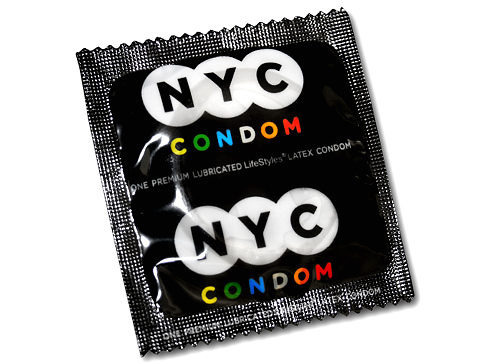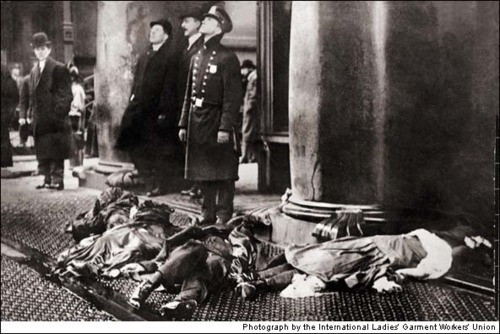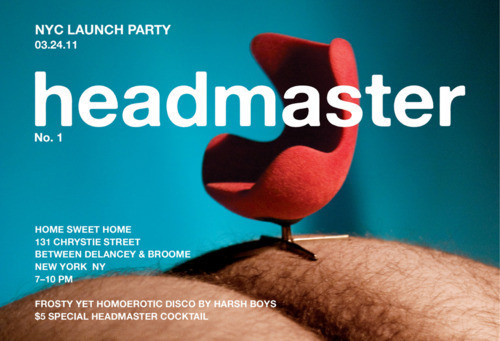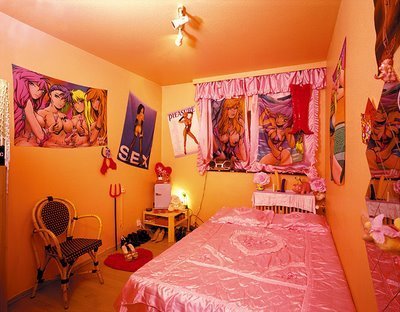Audacia Ray's Blog, page 62
March 25, 2011
YOU could be arrested for carrying condoms in NYC
 First I'm going to tell you about an important action New Yorkers should take to help pass a bill that will prevent condoms from being used as evidence of prostitution. Then I'm going to unpack why some if the writing about this issue has been problematic and has painted it with too-broad strokes.
First I'm going to tell you about an important action New Yorkers should take to help pass a bill that will prevent condoms from being used as evidence of prostitution. Then I'm going to unpack why some if the writing about this issue has been problematic and has painted it with too-broad strokes.
1.Via the Sex Workers Project:
Two important things have happened that make this a good time to voice your support for the bill.
Senator Montgomery, the lead sponsor, has asked that the Codes Committee vote on the bill by mid April.
Council Member Jessica Lappin has introduced a New York City Council resolution in support of the bill.Here are two quick and easy actions you can take that will really make a difference:
New York City residents, please call your Council Member and ask them to sign onto Resolution 0710-2011. Find your Council Member here, and call their Legislative Office.
New York State residents, please call your Senator and ask them to co-sponsor and support Bill S323. Find your Senator here, and call their Albany Office.For more info about what to say to your representatives, click here.
2. There have been a number of articles published over the past year about the fact that in many places in the US, condoms are seized and used in loitering stops as evidence of prostitution. For an example of the way this meme played out, read this piece on the condoms-as-evidence issue in DC. It's outrageous that condoms are being distributed by harm reduction agencies as well as state-run clinics & programs and then are snatched up by the police and used as evidence against the people they are supposed to be protecting.
But the problem with some of the pieces written about the issue is that everyone doesn't have an equal chance of being subjected to this act of policing. This could not happen to "you," the Average Citizen (implied: white, cis, middle class, on your way to a hot date). Policies like this one exist solely to uphold the ability of police to harass people of color, poor people, and often trans women who are profiled as being sex workers or nabbed for "walking while trans."
From an advocacy standpoint, it's important to make asks that are relatable - as in, wow! this could affect me or people I care about. But from a truth standpoint, it's necessary to stress that laws like this affect some populations more/in different ways than others. Bill A1008/S323 needs to be passed because it is a step toward justice, because in our current society, all are not equal before the law. And those of us with privilege need to step up and make those calls when we see the value in the better society this advocacy can create, not just when its a thing that could make our own lives better.


Observatory » Hey, Where's My Robot Girlfriend? An Exploration of Sexual Robotics, Teledildonics and Carnal Technology
An illustrated lecture with sexual health researcher, educator and writer Laura G. DuncanDate: Friday, March 25thTime: 8:00 PMAdmission: $5Presented by Morbid Anatomy
The robotic bride. The orgasm ray. The sex machine.
These classic tropes of science fiction – how fictitious are they really?
Hybrids of sex and technology are flourishing in contemporary culture, from basement workshops where power tools are lovingly repurposed into bedroom aids to sexual media empires with genres devoted solely to robot-human couplings. The medical sciences have even gotten in on the act with models of sperm-powered nanobots.
Technology and sexuality have long been intimately connected, each inspiring innovation in the other and nowhere is this more striking than in the fields of teledildonics (computer-interfaced sex toys) and sexual robotics. The mechanical in service of the libidinal is rooted deeply in our cultural consciousness.
So just how close are we to having a real life Data, the beloved android from Star Trek as fawning partner to our eminently human Tasha Yar? Will we be able to disable our foes with weaponized orgasms? Can you learn to love a robot? Can a robot learn to love you?
Join researcher Laura G. Duncan for a multimedia lecture on sexual technology to find out. With examples from popular media, the medical sciences and actual sexual robotics projects, this talk will work to explode the dichotomy between the "natural" and the "technological" and open a critical analysis of how society conceptualizes sexuality, science and even the body itself.
Laura G. Duncan is a sexual health researcher, educator and writer currently living in Brooklyn. Her research is in the field of medical anthropology and focuses on the influence of medicine on social and individual understandings of sexuality, as well as issues of health care literacy in underserved communities. She has taught sexual health education in a variety of academic, non-profit and community venues and is currently a student and full-spectrum doula. She is, disappointingly, not a robot.
I am very excited to check this out! Laura is awesome. For a sample of her awesomeness, listen to her Red Umbrella Diaries story, GTA.


"Media people- when you do stuff like this, you are ADDING TO THE PROBLEM. You are actively engaging..."
-
PurrVersatility: Britain's Happy Hookers
(this crappiness is why I do what I do wrt media training and pushing back against reporting on the sex industry)


Making Ethical Activist Videos
A new video I made (also...
Making Ethical Activist Videos
A new video I made (also available with captions here). I talk a little bit about my work across a variety of online media platforms, and then go into detail about the process for making two videos I've worked on in the past year: Nothing About Us Without Us: The Shared Goals of the Harm Reduction and Sex Worker Rights Movements (the link also has supplementary material that you should check out) and Abortion in India: Legal But Not Always Safe (link includes some background information and a full transcript).
Specifically, I talk about the challenges activists face in getting information across while also making sure that the people who participate in the videos know the potential risks and are as safe as possible. Unlike in journalism, where the story is the highest priority, I stress that the activist media makers' primary commitment is to the collaborating community. Everything else plays second fiddle. I also talk about the differences in making a video with your own community and with a community you are not a part of.
I made this video (shot and edited by my partner David Beasley) as a contribution to this great project:
Nist.tv and Feminist Frequency have teamed up to bring you Feminism in Focus: Interviews with Feminist Video Creators. A few months ago, WAM! made a call for a variety of diverse spaces to develop events around different aspects of Women, Action and Media. It seemed like the perfect opportunity to focus on one of our favorite topics, and develop a series celebrating the work of feminist video creators. Feminism in Focus: Interviews with Feminist Video Creators was born!
Check out the other six videos in the series here.


March 24, 2011
T-shirt from the APNSW campaign I mentioned in the last post. It...

T-shirt from the APNSW campaign I mentioned in the last post. It says, "Don't talk to me about sewing machines, talk to me about worker's rights."
It's part of a sex workers' campaign to resist being "rescued" and "rehabilitated" into more acceptable (but equally, or eve more exploitative) work in the garment industry.


Tomorrow is the 100th anniversary of the Triangle Shirtwaist...

Tomorrow is the 100th anniversary of the Triangle Shirtwaist Fire - the aftermath of which was a turning point in the American labor rights movement.
Though there have been a lot of gains for workers' rights in the past hundred years, there are still people around the world being locked into factories. And in many places factory work, as awful as the working conditions may be, is regarded as "better" work than oh, say, sex work.
The Asia Pacific Network of Sex Work Projects (APNSW) has been working in solidarity with garment workers in Cambodia to underscore the similar rights violations happening in both industries (link goes to a blog post, with video and more references).
Sex work may be weird work for people to wrap their heads around, but it is indeed work, and sex workers who are employed in brothels, strip clubs, and other workplaces have a lot in common with people who are struggling to establish and maintain workers' rights. Its time these things all come together.


Photo
March 23, 2011
""An independent tracking study released today by the Women's Funding Network shows that..."
"An independent tracking study released today by the Women's Funding Network shows that over the past six months, the number of underage girls trafficked online has risen exponentially in three diverse states," Richardson claimed. "Michigan: a 39.2 percent increase; New York: a 20.7 percent increase; and Minnesota: a staggering 64.7 percent increase."
In the wake of this bombshell revelation, Richardson's disturbing figures found their way into some of the biggest newspapers in the country. USA Today, the Houston Chronicle, the Miami Herald, the Minneapolis Star Tribune, and the Detroit Free Press all repeated the dire statistics as gospel. The successful assault on Craigslist was followed by a cross-country tour by Richardson and the Women's Funding Network.
None of the media that published Richardson's astonishing numbers bothered to examine the study at the heart of her claim. If they had, they would have found what we did after asking independent experts to examine the research: It's junk science. After all, the numbers are all guesses.
The data are based merely on looking at photos on the Internet. There is no science.
"-
I'm excited that this article exists.
But also very frustrated that the voices of sex workers saying that these statistics are bullshit have been continually ignored.
Thanks, white researcher dudes, for legitimizing what we've been shouting about for years.


March 20, 2011
velved:
German brothel bedrooms
March 19, 2011
apt4e:
A friend gifted us with two dusty chandeliers. After...

A friend gifted us with two dusty chandeliers. After some TLC, the one in my right hand will live in the bathroom and the one in my left hand will live in the master bedroom.
We're seeking out one more (black!) for our dining room/foyer. Which means there will be chandeliers in 50% of the rooms. That is just about the right number of chandeliers for a two bedroom apartment.
I made a blog for my apartment renovating and decorating adventures, for the place I just bought (!) in the Brooklyn neighborhood I've been living in for the last 8 years - Windsor Terrace. I'll reblog a lot of the process here, but not all of it.

















